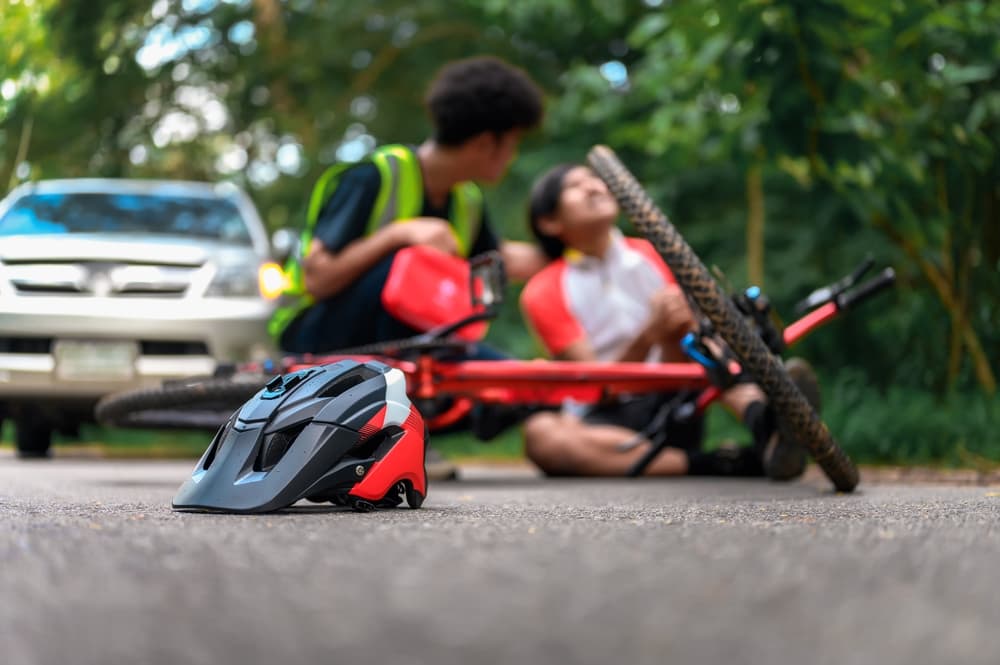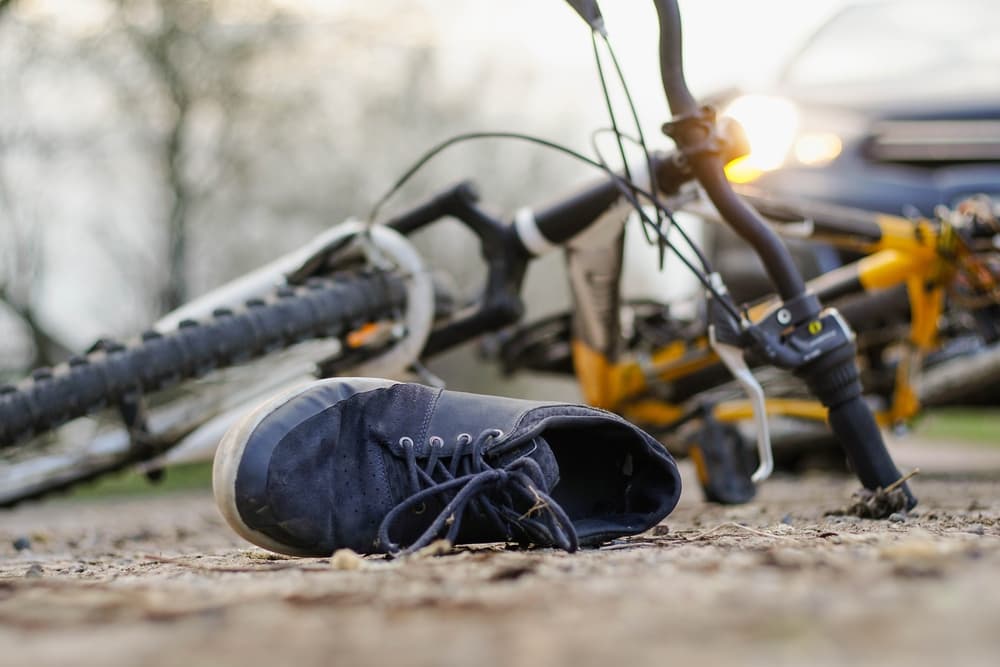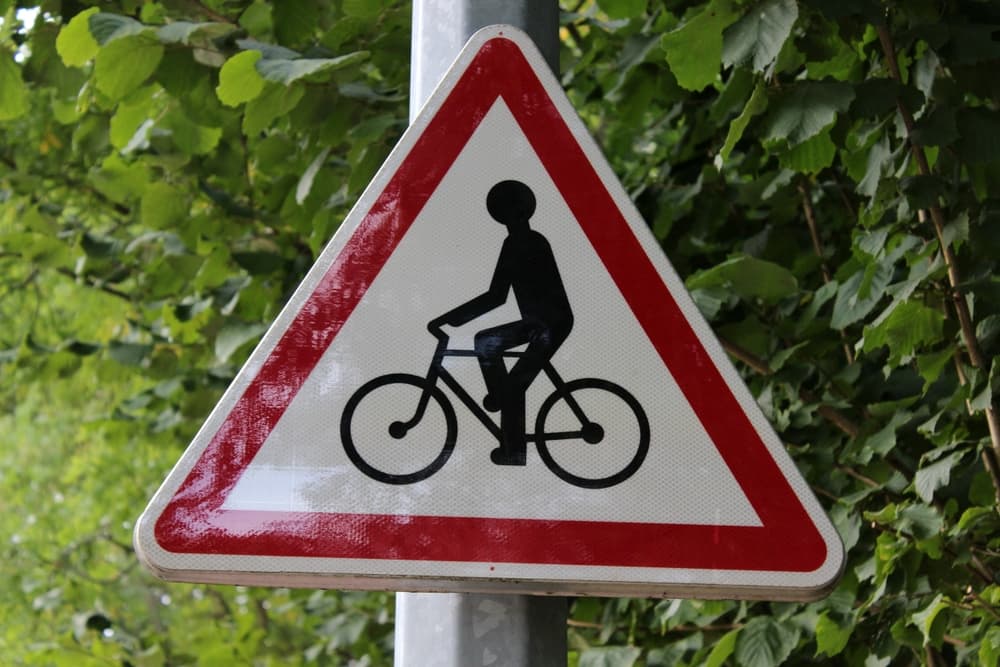According to the National Highway Traffic Safety Administration, Florida is the most dangerous state in the country for bicyclists, with an average of 182 bicyclist deaths annually. Florida sees about 8.4 bicyclist deaths per million people each year, which is over 265% of the national average.
If you're a Florida bicyclist, you need to know what to do after a bicycle accident. Contact a bicycle accident lawyer as soon as possible. Here are a few facts that you should know:
Schedule A Consultation Today!
Florida Bicycle Accident Statistics
Florida is at the top of the list of most dangerous states for bicyclists, and statewide bicycle accidents and fatalities are still on the rise. There were 8,413 bicycle crashes in Florida in one year, which represents a five-year increase of 28%. Of those accidents, 228 were fatal—43% more than the total number of bicycle fatalities in 2018.
Bicycle accidents make up 2% of all vehicle crashes and 7% of all fatal accidents in Florida. Over five years, bicycle deaths made up 5.4% of all traffic fatalities in Florida, which is a little less than twice the national average of 2.8%.
Bicycle Accidents in Indian River County

It's not just statewide bicycle incidents that are trending upward. The 43 bicycle crashes in Indian River County represent a 26% increase from five years ago. Roughly 3% of all county-wide bicycle accidents in the past ten years have been fatal.
In a recent survey, 39% of Indian River County residents said riding a bicycle in their neighborhood felt dangerous. Two-thirds of the county's residents said they were somewhat or very dissatisfied with how well the community is designed for safe bike riding.
Most local roads in Indian River County have speed limits between 35 and 45 miles per hour, making even local roads particularly dangerous to bicyclists. According to the Federal Highway Administration, pedestrians have a 95% chance of survival when hit by a vehicle traveling at or below 20 miles per hour.
The chance of survival falls to 35% at 30 miles per hour, and pedestrians have just a 15% chance of surviving an accident with a vehicle traveling at 40 miles per hour. Those that do survive these more serious collisions are more likely to sustain incapacitating injuries that require intensive medical care.
How Does Indian River County Compare to the Rest of Florida?
Indian River County's 43 bicycle crashes in one recent year equaled about 16 crashes per million residents, which was higher than more than half of the rest of the counties in Florida but less than the countywide average of 47 crashes per million residents.
However, Indian River bicyclists may still find themselves at higher risk, as its neighboring counties ranked significantly higher on this list: Brevard County ranked 9th in the state at 114 crashes per million and tied with Osceola County for 10th most bicycle deaths per capita (3 per million).
The most dangerous counties for Florida bicyclists, measured by bicycle deaths per million residents, were Miami-Dade (361 deaths per million), Broward (330 deaths per million), Palm Beach (256 deaths per million), Pinellas (243 per million) and Hillsborough (224 deaths per million).
How Does Florida Compare to the Rest of the United States?
Florida has the highest number of state-wide bicycle deaths per year, but by how much?
Average Number of Bicycle Fatalities
Over the last five years, the states with the highest average number of annual bicycle deaths were Florida (182.2 deaths), California (151 deaths), Texas (79.2 deaths), New York (41.6 deaths), and Arizona (36.4 deaths).
That means Florida has 20% more bicycle deaths than the next most dangerous state on the list and 517% more deaths than the national average (29.5 deaths).
Average Number of Bicycle Fatalities Per Capita
States with higher populations naturally have more individual bicycle deaths per year, but Florida also outranks the rest of the country in bicycle deaths per capita.
Over five recent years, the top five states by bicycle deaths per million residents were Florida (8.4 deaths per million), Louisiana (7.1 deaths per million), Arizona (5.1 deaths per million), Delaware (4.8 deaths per million), and South Carolina (4.3 deaths per million). That puts Florida's per capita bicycle death rate at 18% above the next most lethal state on the list and 265% higher than the national average (3.2 deaths per million).
Increase in Average Number of Bicycle Fatalities over Time
In addition to current bicycle death rates, the NHTSA also measured the increase in average bicycle deaths. Florida's annual number of bicycle fatalities increased by 33% over 10 years, but fifteen other states saw greater jumps in their average bicycle death rates.
Mississippi and Oklahoma topped the list, both of which saw 100% increases, followed by West Virginia (+86%), Washington, D.C. (+83%), and New Mexico (+73%).
Average Bicycle Deaths Among Bicycle Commuters
Interestingly, even though Florida has far more bicycle deaths than the rest of the country, these deaths impact the state's bicycle commuters at a much lower rate than several other states.
Mississippi averaged 105.2 bicycle deaths per 10,000 bicycle commuters, compared to Florida's 36.7. Three other states outranked Florida for bicycle commuter death rates: Alabama (51 deaths), South Carolina (45 deaths), and Louisiana (44.9 deaths).
When and Why Do Bicycle Fatalities Occur?
Bicycle accidents can happen in even the best and safest of circumstances.

Traffic Type
Nearly ⅔ of all bicyclist fatalities occur at non-intersection locations, likely because these areas are where traffic is the fastest. About 85% of all fatal cyclist accidents take place in urban areas.
Weather Conditions
It's a good idea to stay off the road in bad weather. In 2022, about 8% of all bicycle injuries and fatalities in Florida occurred in bad weather, and accidents were five times more lethal in fog than in any other weather conditions.
However, bicycling in warm weather isn't automatically safe—80 % of all bicycle injuries occur when the weather is perfectly clear.
Time of Day
There is no more dangerous time to be on the road than at night. Over half of all bicyclist fatalities occur between dusk and dawn, and the highest proportion of fatal crashes take place between 6 p.m. and 8:59 p.m. If you do need to be on the road at night, use a bicycle light and wear reflective clothing.
Substance Usage
About 36% of all fatal cyclist accidents involved alcohol consumption by either the vehicle driver or the cyclist. In 30% of these events, one or both parties had a BAC of 0.08 g/dL or higher.
Does Safety Gear Make a Difference?
Bicycling without a helmet may not seem risky, but adequate protection can mean the difference between life and death.
In the approximately 220 fatal bicycle accidents that occur in Florida every year, just 18 victims wore helmets, 25 had some sort of personal lighting, and only 3 were wearing reflective clothing. By comparison, 193 of these fatalities involved victims who were wearing no protective equipment at all.
Of course, that doesn't mean that wearing protective equipment will make you invincible. Bicyclists in Florida sustained 6,808 non-fatal injuries in accidents in 2020, and 798 of these incidents involved victims wearing safety gear.
If you are involved in even a minor bicycle accident, take the incident seriously and seek the appropriate care.
How Much Does It Cost to Recover From a Bicycle Accident?
The true cost of a serious bicycle accident is difficult to measure. In addition to the emotional, loss of income, and potential decrease in quality of life, many of the most common physical injuries among bicyclists come with a steep price tag.
According to the CDC, cyclists who receive emergency room treatment and are released after an accident incur an average of $7,322 in medical fees. The average income lost in these accidents is $1,364, and the loss of quality of life costs an average of $84,219, for a combined total cost of $92,905.
Costs are significantly greater for cyclists hospitalized after an accident. The CDC reports that the average medical cost for these more severe accidents is $61,553. The average loss of income for hospitalized cyclists is $18,014 and loss of quality of life costs an average of $195,313, for a combined total of $274,879.
Medical costs can vary greatly depending on the injuries sustained.
These are the CDC's average costs for some of the most common bicycle accident injuries:
- Traumatic brain injury: Head injuries are the most common non-lethal injuries sustained in bicycle accidents. Depending on the severity of the crash, costs can range from $6,986 for emergency room treatment of an internal injury to $44,739 for a head or neck fracture that requires hospitalization.
- Spine and back: A spinal cord injury is a serious condition that requires in-patient hospitalization, which can cost anywhere between $42,284 and $44,007.
- Broken arm: The CDC reports that the average cost of a hospitalization for an upper extremity fracture is $36,332.
- Broken leg: Lower extremity fractures cost an average of $7,125 for emergency room treatment and $35,123 for in-patient hospital care.
These are average costs gathered from across the United States, but healthcare costs vary greatly from state to state. According to the CDC, Florida is the fourth most expensive state in the nation for healthcare.
What to Do After a Bicycle Accident

After an accident while bicycling, get the help you need to recover fully.
After a bike accident, take these steps:
- Get a physical exam. You may think you're aware of all of the injuries you sustained in the crash, but many head and neck injuries can remain hidden for days or weeks before you notice them. Get a full check-up as quickly as possible so the doctor can immediately document your injuries.
- Consult an accident lawyer. There are a lot of complicated insurance and legal proceedings that come after a bicycle accident that can quickly become overwhelming, especially while you're trying to recover from your injuries. Working with a trained accident lawyer can ensure you get the best possible settlement and your medical bills are fully covered.
- Keep track of all accident-related expenses. Your attorney will work on your behalf to ensure that your settlement covers all of the losses you incurred due to your accident. Keep detailed records of everything you spend, so your lawyer can fight for the full amount that you are owed.
- Don't talk to the driver's insurance adjuster. In many cases, the other party's insurance policy will be responsible for paying for your costs resulting from the accident. Their insurance adjuster may ask you for a statement, which they can use to avoid paying you the full amount you deserve. Consult an attorney before you speak to anyone other than the police on the scene. A professional accident lawyer can prepare a statement that best positions you to win your case.
How to Choose an Accident Lawyer
Many law firms focus on personal injury cases, but find an attorney with specific knowledge of bicycle and pedestrian accidents and injuries. An experienced personal injury lawyer will have a thorough understanding of local traffic laws and a network of experts who can speak on topics like the physics of a bicycle collision and the specific medical details of an injury.
After a bicycle accident, don't wait to get in touch with an attorney. The sooner you bring in a professional, the sooner you can get back to focusing on your recovery.
